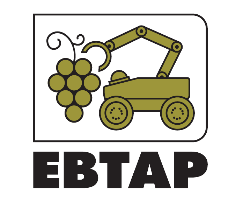- Θέλετε να μάθετε περισσότερα;?
- info@evtar.eu
A NON-DESTRUCTIVE METHOD FOR GRAPE RIPENESS ESTIMATION USING INTERVALS’ NUMBERS (INS) TECHNIQUES – AGRONOMY, VOL. 12, NO. 7, 1564, 2022
29 June 2022VARIABLE SELECTION ON REFLECTANCE NIR SPECTRA FOR THE PREDICTION OF TSS IN INTACT BERRIES OF THOMPSON SEEDLESS GRAPES – AGRONOMY 2022, VOL. 12, NO. 9, 2113
Abstract
Fourier-transform near infrared (FT-NIR) reflection spectra of intact berries of the grape variety Thompson seedless were used to predict total soluble solids (TSS) content. From an initial dataset, 12 subsets were considered by applying variable selection to extract the reflectance values at wavenumbers most correlated to the chemometrically measured TSS content. The datasets were processed by both multiple linear regression (MLR) and partial least squares (PLS) methods towards predicting the TSS content from the reflection values of each spectrum. Prediction accuracy was measured in terms of both the coefficient of determination R2 and the root mean squared error (RMSE). It was found that variable selection improved the prediction accuracy with both processing methods; values of R2 of up to 0.972 and 0.926 and RMSE of up to 0.306 and 0.472 were reported with MLR and PLS, respectively. The combination of variable selection and MLR displayed (a) higher accuracy when the spectra dataset variation was limited, (b) lower accuracy with datasets of large variation such as those with spectra from a variety of maturity stages, and (c) failed with more complex spectra sets such as those from different harvest years. The combination of variable selection and PLS has demonstrated reliable prediction results with various degrees of dataset complexity
Citation
C. Chariskou, E. Vrochidou, A. J. Daniels, V. G. Kaburlasos, “Variable selection on reflectance NIR spectra for the prediction of TSS in intact berries of Thompson seedless grapes”, Agronomy, vol. 12, no. 9, 2113. https://doi.org/10.3390/agronomy12092113
